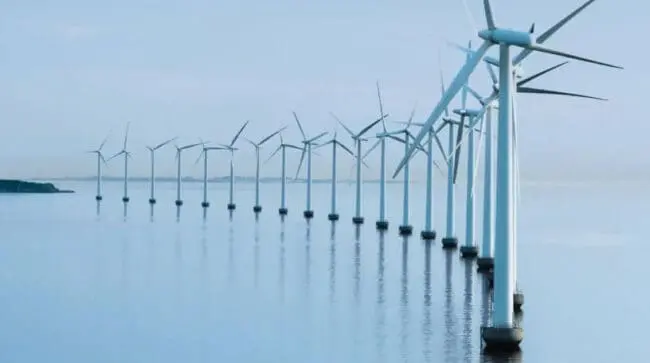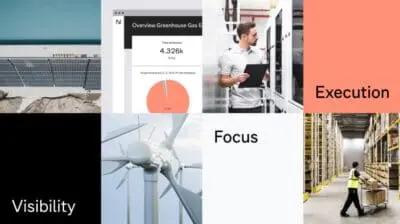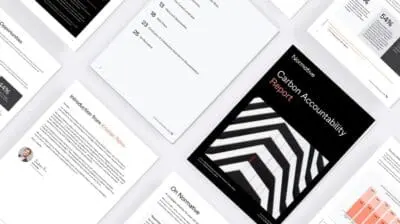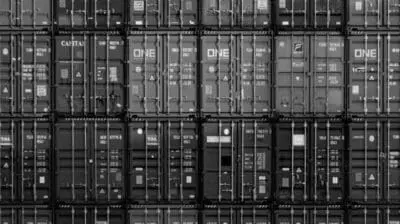Businesses and net zero: assessing commitments and progress

A look at the potential of net-zero commitments & the rate of progress toward meeting them.
At COP28, world leaders are conducting the first-ever Global Stocktake: an assessment of the global progress made toward reaching the Paris Agreement targets. In order to reach the goals set out in the agreement, governments and businesses must work together. It’s these joint decarbonization efforts that will determine whether the world reaches net zero on a Paris-aligned timeline.
In the second edition of this research, we have once again analyzed the climate commitments of publicly traded companies with existing carbon reduction commitments. While the research shows an encouraging uptick in net-zero-aligned commitments, it also reveals an execution gap between the commitments made and the actions taken. Our findings highlight the need for sizable, timely emissions reductions that cover businesses’ entire value chains.
The research
Commitments
In the first edition of our net-zero progress analysis, our sample included 1,062 publicly traded companies provided by the Net Zero Tracker, a project co-run by Oxford Net Zero. While all of these companies had some type of reduction target, only 793 companies were committed to net zero. The updated sample used in this year’s analysis shows a steep increase in companies committed to net zero: 976, as of September 2023.
To translate these commitments to their actual potential to reduce emissions, we match greenhouse gas (GHG) emissions data to the publicly listed entities of the respective samples. While the 793 net-zero aligned companies of last year’s report accounted for an estimated 64% of global emissions from fossil fuel and industry, we find that the 967 companies of this year’s analysis account for an estimated 78% of global carbon emissions from fossil fuel and industry.
In other words: more than three-quarters of global emissions from fossil fuel and industry are now covered by net-zero commitments. This is a 22% increase in the emissions that are covered by net-zero commitments in comparison to last year’s findings.
Progress toward net zero
While these are encouraging developments, our 2023 analysis shows that there is still room for improvement when it comes to making progress toward net zero.
We investigated a subsample of the 967 net-zero aligned companies for which three consecutive years of self-reported scope 1, 2, and 3 emissions data are available. For this subsample we find that, after an initial increase in their median emissions from 2020 to 2021, these companies were able to reduce their overall emissions by a median of 3.8% in 2022.
Breaking down the reduction progress by scope, we see that the 45 companies of our subsample are making the most headway in scope 2, with median reductions of 6% in 2021 and 7% in 2022.
Scope 3 reductions, on the other hand, are progressing the slowest. After an initial increase in 2021 (median of +3%), scope 3 emissions show a median decrease of 3.5% in 2022. Table 1 summarizes all percentage changes in emissions in our subsample from 2020 through 2022, in addition to overall changes in industry emissions over the same time period.
| Sample | 2020 to 2021 | 2021 to 2022 |
|---|---|---|
| All scopes | 1.87% | -3.77% |
| Scope 1 | 0.32% | -4.14% |
| Scope 2 | -5.97% | -7.10% |
| Scope 3 | 3.01% | -3.49% |
| Global industry GHG emissions | 5.28% | 0.90% |
Two conclusions can be drawn from these findings.
- It is encouraging to see that some of the large publicly traded and net zero-committed companies of our sample are showing progress on their net-zero journeys. Particularly, the scale of their scope 2 reduction progress is closing in on the scale needed to reach emission levels consistent with a below-1.5°C pathway in 2030 (annual reductions of 8.7% per year).
- However, we see that on an aggregated level, emissions reductions are not moving quickly enough to bring the world to net zero in a Paris Agreement-aligned time frame. Specifically, reducing scope 3 emissions appears to be the biggest challenge for the organizations in our subsample. Considering the fact that these companies can be seen as industry leaders in terms of their reduction commitments and consistency in their full disclosure of corporate emissions, our findings hold some important implications for the global state of net-zero progress.
The implications of the research
The companies in the sample of our analysis are large, publicly traded companies – industry leaders whom the world is looking to for guidance in the net-zero transition. However, even those leaders are not making progress fast enough: we need global emissions to decrease by 8.7% each year to meet Paris Agreement targets.2
If some of the most capable companies with the most resources are currently not able to achieve reductions in their emissions at the scale and speed required, most other companies are likely struggling, too.
If we are to reach global net zero in time to mitigate the most harmful effects of climate change, we need to take urgent action to empower companies to deliver upon net-zero commitments with sizable, timely emissions reductions throughout their entire value chains.
Executive summary
- Our 2023 analysis of the state of net-zero commitments and reduction progress shows that an increasing share of global industry emissions is covered by net-zero commitments.
- Encouragingly, organizations also appear to make progress towards meeting their commitments.
- However, there is still an execution gap between the commitments made and the actions taken.
- The slower-than-required pace of progress that our analysis reveals demonstrates that companies are still struggling to drive emissions reductions at sufficient speed and scale.
- To meet global net-zero targets, companies need to be empowered to deliver upon net-zero commitments.
Use Normative to drive decarbonization in your business
Normative’s carbon accounting makes carbon visible throughout business operations and the value chain, giving the carbon insights needed to follow through on climate commitments.
Citations
[1] We use the Net-Zero Tracker’s repository of corporate climate commitment data (as of September 2023) in combination with companies’ self-reported emissions data based on the Global Reporting Initiative (GRI) Standard Guidelines. Where self-reported data are not available, we estimate corporate emissions using Exiobase industry average emissions data.
[2] UN Environment Programme, Emissions Gap Report 2023











